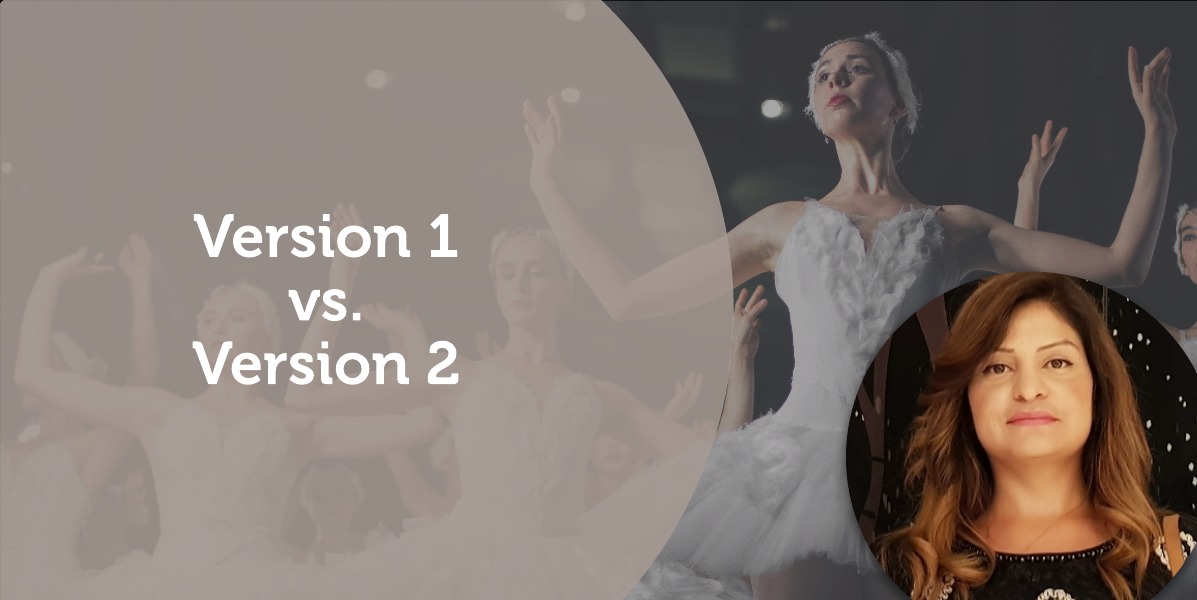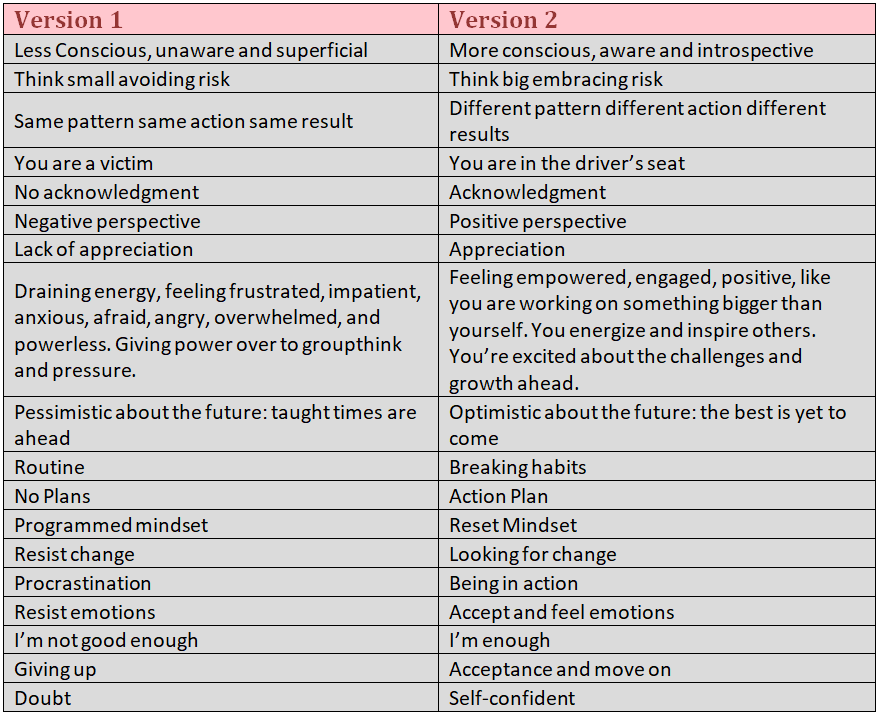
(Life Coach, PALESTINE)
Version 1 Version 2
Working for many years in a corporate I gained a better understanding into the importance of upgrading software, although it creates some discomfort during the process, the results are worth it in terms of improved functionality, security and better performance.
Getting an alert to upgrade operating systems and computer software always seem to happen at the most inopportune times. Maybe you’ve got to send that quick email first or write up that report? More often than not, you’ll probably put off installing the latest upgrades for your computer until the next day, week, or even month. When a set of changes made to software are significant and substantial enough, we can call it an Upgrade.
I can relate this process to the relation between the coach and the client, and how the coach witnesses the change in client’s development toward his/her best version of his/her self. In the beginning, the client is in version 1, and that means that he/she is functioning, and nothing is wrong, but the client is missing an improvement in many areas that could make huge difference in his/her life.
During the sessions, the client will create more awareness and growth mindset in the areas in his/her life that he/she wants to develop and evolve, gradually the coach will work with the client to move him/her forward from version 1 to version 2, and here comes the magic of experiencing a new life.
This power tool V1 vs V2 is applicable to all kind of clients, and it can cover many other aspects and niches of coaching as well.
Definitions linked to the Tool
Upgrading is the process of replacing a product with a newer version of the same product. In computing and consumer electronics, an upgrade is generally a replacement of hardware, software or firmware with a newer or better version, in order to bring the system up to date or to improve its characteristics.
What it looks like to be in version 1 and version 2
For a better understanding of V1/V2 it requires us to explore our perception of both. One of the first steps in the process is discovering and defining both versions from a holistic perspective on your own terms.
Well, while a client is in version 1 he/she is trying something and not achieving the desired results? Or, is it lack of trying because he/she fear that they may fail (not achieve what they were hoping to accomplish)?
It is important for all of us to come to grips with the fact that not everything we try is going to work as well as we had planned. This can be a difficult concept for many of us to comprehend, especially if we are of the perfectionist type.
Sometimes the best we can do is fail until we succeed and learn from the mistakes we make along the way. Working toward version 2 is better yet, it is to give yourself permission to make mistakes. Learning from success and failure is a great way to create a personal new version and change while experiencing the ups and downs in the journey of life. Anytime you work towards personal change, mistakes are going to happen, but you will work toward your goal.
Version 1 Vs Version 2
The best definition of the client while in version 1 or version 2 can be mostly explained through some key skills and differences between both versions that the client would evolve and gained during coaching sessions:
Coaching applications
Asking a powerful question helps the client to open up his or her mind to a different way of looking at things. To really help someone to required to be able to reach deep down into the core of their thinking and experiences and stir something in their inner selves. At times you may need to shake them up. This starts with the first question you ask your client. Once you have awakened some hope of possibility within an individual, the path for moving forward from version 1 to version 2 becomes a real probability. A different way of approaching questions and presenting information helps the client to look at their same reality through different eyes and possibly more accurately.
It’s as Einstein said,
No problem can be solved from the same level of consciousness that created it.
Questions that the coach can ask to upgrade the client from
version 1 to version 2.
- What do your values need to be for you to create the lifestyle of your choice?
- What is one area of your life you would like to change?
- If you weren’t stuck in a rut, what would that be like now?
- what is missing in your life?
- How will you feel when you get it?
- When last did you achieve an important goal that made you happy? What steps did you follow, and can you apply some of those steps now?
- What’s one thing you would love to do before you die?
- What's Standing In Your Way?
- Can You Tell Me More?
- What Will Happen If You Don't Take This Step?
- What Does Success Look Like?
- What Are Your 'Five Whys?'
- What Are You Most Proud Of?
- What Do You Want?
- What Have You Done to Try To Solve The Problem?
- What Are You Doing to Not Achieve Your Goal?
- If Your Main Obstacle Didn't Exist, How Would Your Life Look?
- What Do You Need Most Right Now?
- What Will Things Look Like After You've Been Successful?
- What Is the Most Important Thing In The World To You, And Why?
- What's Important About That to You?
Coaching is a way of bringing about individual improvements in performance to help people move towards their full potential and it stems from the assumption that the person being coached has all the answers and can solve his/her own problems. The coach’s role here is to facilitate the process through rapport building, good questioning techniques and reflection. The client retains responsibility for his/her actions.
Client’s upgrading from Version 1 to Version 2 is the process of developing greater self-awareness, greater personal insight. The biggest contribution a coach makes through reflective dialogue is to help clients get a strong understanding of the way they think and act.
It helps shape their perspectives.
Moving from one version to another is consistent with different perspectives which play a fundamental part in any coaching session. In fact, in life itself. It is “a way of looking at, or interpreting, a particular situation. “So the more the client is moving to his/her best version the more positive perspective he/she will gain.
Your perspective determines your experience in life, not your circumstances.
Coaches do not help change a client’s circumstance. They create impact by helping to reframe perspective. Change the way you think and behave to change the circumstance.
References
Hill, N. (1972). The Think & Grow Rich Action Pack. New York, Penguin Books.
https://www.mindbridgetraining.com/wp-content/uploads/2011/06/Powerful-Questions1.pdf
https://www.forbes.com/sites/forbescoachescouncil/2018/06/21/16-powerful-questions-coaches-ask-their-clients-to-help-achieve-their-goals/#24a6fcbf65e0
hhttps://www.biketourvacations.com/the-most-powerful-questions-in-the-world/ttps://www.wherethelightplays.com/blog/2016/brooke-castillo-self-coaching-model



